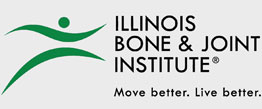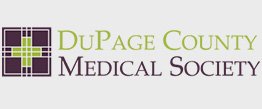Ligaments
The most common need for a knee arthroscopy (or knee “scope”) is torn cartilage or ligaments. These conditions are usually a result of an acute injury.
Ligaments are soft tissue structures that connect bone to bone. In the knee joint, there are four ligaments that connect the thigh bone to the shin bone, and act as stabilizers to the knee joint. The medial (MCL) and lateral (LCL) collateral ligaments stabilize the knee from side to side. The anterior (ACL) and posterior (PCL) cruciate ligaments give the knee stability with rotation. When a ligament is torn, there is noticeable instability or giving way with certain movements that stress the injured ligament. There will almost always be swelling associated with pain and instability. After a few days, pain may subside and function may improve, but giving way symptoms will remain.
There is also a ligament in the knee that acts as a stabilizer specifically to the knee cap. The medial patellofemoral ligament (MPFL) tears if the knee cap dislocates. Sometimes, symptoms of kneecap instability can be resolved with physical therapy and bracing. If the knee cap continues to dislocate, or partially dislocate with activity, surgery is recommended.
A knee arthroscopy is an option for patients with pain, locking, and/or giving way symptoms that interfere with normal daily activities and recreational activities. In certain situations, conservative treatment could be considered first. However, meniscus and cartilage tears, and most ligament tears do not heal themselves, so an arthroscopy is the most reliable solution for resolving mechanical symptoms or instability. Multiple cartilage or ligament injuries can occur in the same event of injury. More than one tear may need to be addressed in an arthroscopic procedure.
To learn more about knee cartilage tears and treatment Click Here
A knee arthroscopy is a surgical procedure in which a camera is inserted into the knee joint through a small portal. There are usually two portals at the front of the knee that allow the surgeon to visualize the entire knee joint. Depending on the procedure, an additional portal or small incision may be necessary. Special instruments are inserted through the same portals as the camera, which allows the surgeon to perform the operation. Arthroscopic knee operations for ligaments include:
- ACL/PCL reconstruction: The torn ligament is repaired with a tendon graft either from your own body, or from a cadaver. Dr. Durkin can discuss the options with you to help you decide together which option may best benefit you. This procedure requires an extra small incision in addition to the normal portals to pass the graft through the joint. Tunnels are drilled into the thigh bone and shin bone that allows the graft to be passed through and positioned in the same anatomical alignment as a healthy ligament. This procedure restores knee stability with movement and sports, and eliminates giving way episodes.
- MCL repair or reconstruction: Mild MCL sprains can scar and heal without surgery. MCL tears that cause significant instability, or are still lax after attempting conservative treatment require surgical fixation. Tears located at the end of the ligament can be repaired. The torn ligament that has been pulled away from the bone is surgically fixated back to normal position. Tears occurring in the middle of the ligament cannot be repaired, and instead are reconstructed with a graft. This operation is performed through an open incision. This procedure restores knee stability with movement and sports, and eliminates giving way episodes.
- MPFL repair or reconstruction: Sometimes, the MPFL can scar and heal without surgery. If the knee cap continues to dislocate or partially dislocate, surgery is recommended to repair or reconstruct the ligament. Depending on the severity of the tear, it can be either repaired back to proper position, or needs to be reconstructed completely with a graft. This procedure restores knee cap stability with movement and sports, and helps keep the knee cap tracking properly.





